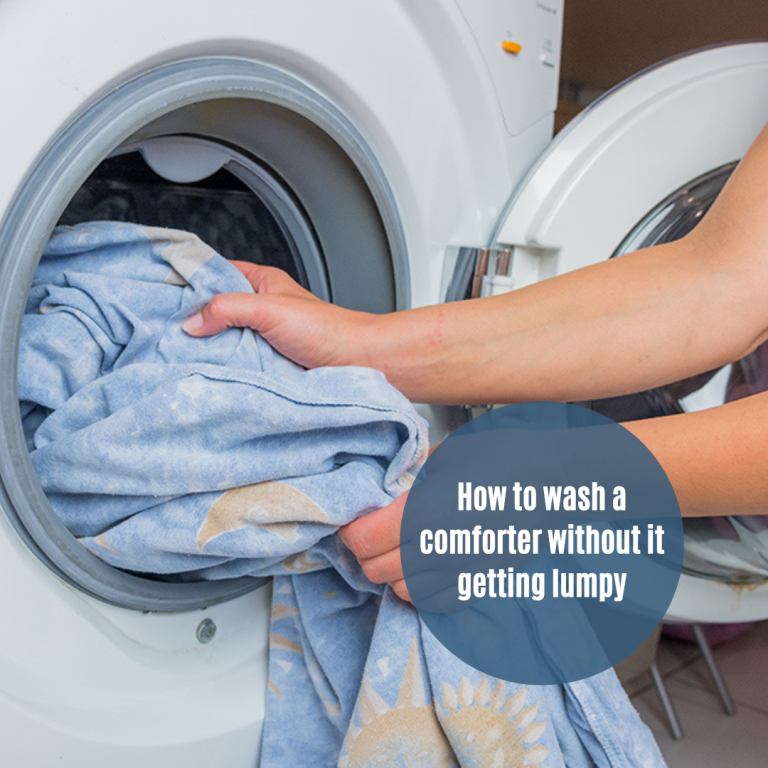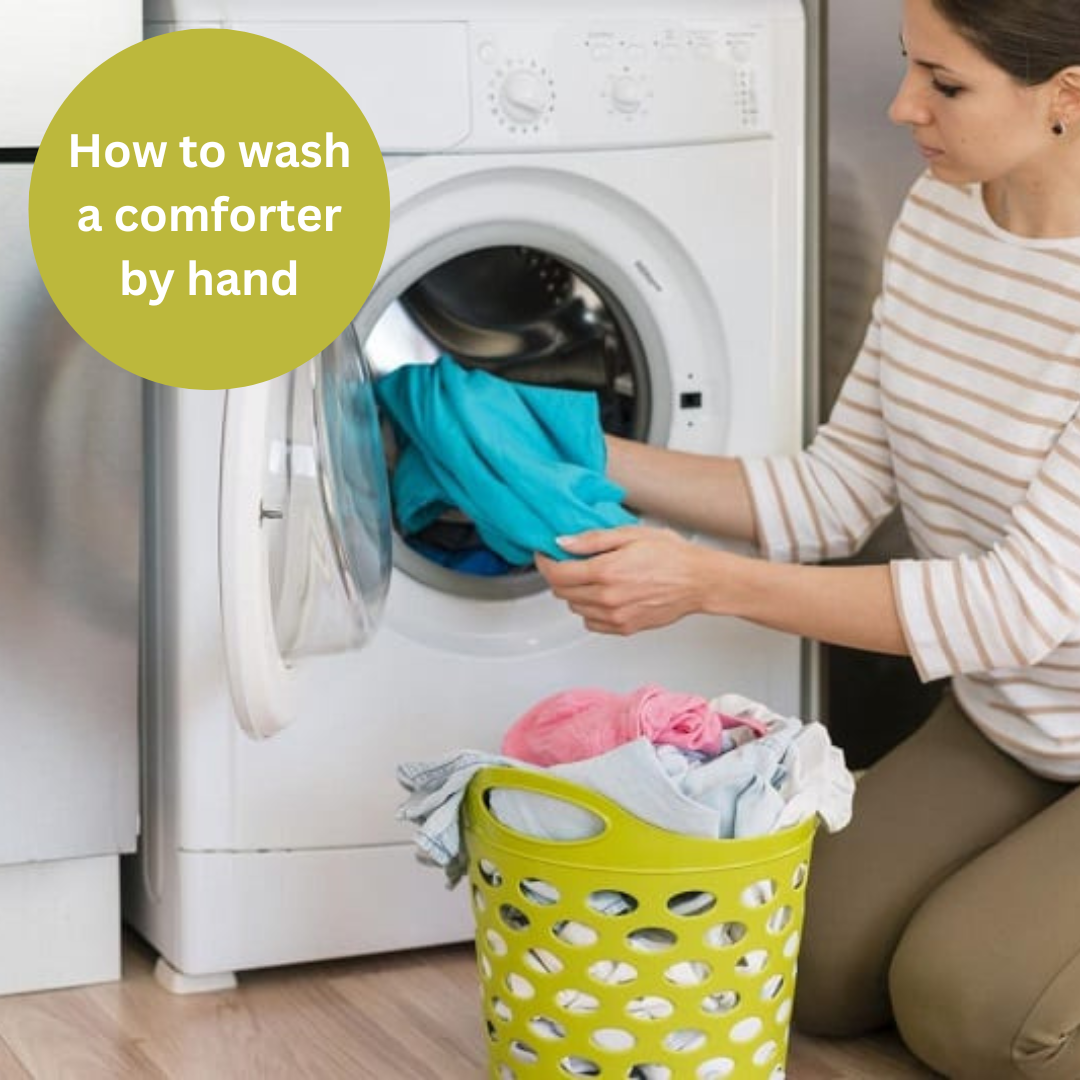A comforter is a cozy and warm bedding item that can enhance your sleep quality and comfort. However, over time, your comforter can accumulate dust, dirt, stains, and odors that can affect its appearance and hygiene. To keep your luxury comforter sets fresh and clean, you need to wash it regularly and properly. But how do you wash a comforter without it getting lumpy? In this article, we’ll show you some tips and tricks on how to wash a comforter in a washing machine or by hand, and how to prevent or fix lumps in your comforter. Comforters can get lumpy for various reasons. Let’s go!!!
How to wash a comforter in a washing machine
Washing your comforter in a washing machine is the easiest and most convenient way to clean it. However, you need to follow some steps to ensure that your comforter comes out clean and lump-free.
Step 1: Read the care label
Before you wash your comforter, you need to read the care label and follow the manufacturer’s instructions. The care label will tell you what type of fill your comforter has (down, down alternative, wool, cotton, silk, etc.), what temperature and cycle to use, what detergent and additives to avoid, and how to dry your comforter.
Step 2: Pre-treat stains
If your comforter has any stains or spots, you need to pre-treat them before washing them. You can use a mild laundry detergent or stain remover and apply it to the stained area with a damp cloth or toothbrush. Gently rub the stain until it fades away.
Step 3: Choose the right detergent
You need to choose a mild and additive-free detergent that is suitable for your comforter’s fill type. For example, if you have a down or down alternative comforter, you can use a down-specific detergent or a gentle liquid detergent. Avoid using bleach, fabric softener, or harsh chemicals that can damage the fill or cause lumps.
Step 4: Wash in a large washing machine
You need to wash your comforter in a large washing machine that can accommodate its size and weight. If your home washer is too small or too full, you can use a commercial washer at a laundromat. Place your comforter loosely in the washer and make sure it is balanced and evenly distributed. Use cold or warm water (depending on the care label) and a gentle cycle to wash your comforter. You can also use an extra rinse option to remove any excess detergent or dirt from the fill.
Step 5: Dry in a large dryer
You need to dry your comforter in a large dryer that can accommodate its size and weight. If your home dryer is too small or too full, you can use a commercial dryer at a laundromat. Place your comforter loosely in the dryer and make sure it is balanced and evenly distributed. You can also use tennis balls or wool dryer balls to help fluff up the fill and prevent lumps. You can also use dryer sheets to add some freshness and softness to your comforter. Check your comforter periodically and remove it when it is completely dry. Do not over-dry your comforter as it can damage the fill or cause lumps.
How to wash a comforter by hand
If you don’t have access to a large washing machine or dryer, or if your comforter’s care label says hand wash only, you can wash your comforter by hand in your bathtub. However, this method is more labor-intensive and time-consuming than using a washing machine.
Step 1: Fill half of your tub with cold or warm water.
Depending on the care label of your comforter, you can fill half of your tub with cold or warm water. Make sure the water is not too hot or too cold as it can damage the fill or cause lumps.
Step 2: Pour a cap of mild laundry detergent into the water and mix it in with your hand.
You need to use a mild and additive-free detergent that is suitable for your comforter’s fill type. For example, if you have a down or down alternative comforter, you can use a down-specific detergent or a gentle liquid detergent. Avoid using bleach, fabric softener, or harsh chemicals that can damage the fill or cause lumps. Pour a cap of detergent into the water and mix it well with your hand until it dissolves.
Step 3: Immerse your comforter and gently swirl it through the water.
Place your comforter in the tub and make sure it is fully submerged in the water. Gently swirl it through the water with your hands to remove any dirt or stains. Do not wring, twist, or scrub your comforter as it can damage the fill or cause lumps.
Step 4: Drain the tub and rinse your comforter with clean water.
After washing your comforter for about 15 minutes, drain the tub and squeeze out as much water as you can from your comforter. Do not wring or twist your comforter as it can damage the fill or cause lumps. Fill the tub again with clean water and rinse your comforter thoroughly to remove any detergent residue. Repeat this step until the water runs clear.
Step 5: Dry your comforter on a large flat surface
After rinsing your comforter, squeeze out as much water as you can from your comforter. Do not wring or twist your comforter as it can damage the fill or cause lumps. Spread your comforter on a large flat surface, such as a bed, a table, or a floor. Make sure the surface is clean and dry. Fluff up the fill with your hands and smooth out any wrinkles or lumps. Let your comforter air dry completely before storing it or placing it back on your bed. You can also use a fan or a dehumidifier to speed up the drying process. Do not use a dryer to dry your comforter as it can damage the fill or cause lumps.
In conclusion, washing a comforter without it getting lumpy is not difficult if you follow some simple steps and tips. You need to read the care label of your comforter, pre-treat stains, choose the right detergent, wash in a large washing machine or by hand, dry in a large dryer or on a flat surface, and prevent or fix lumps in your comforter. By doing so, you can keep your comforter clean and cozy for years to come.


